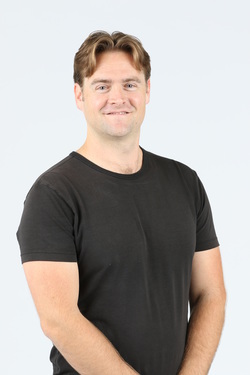Inflammatory fluid is a thick fluid, more like ketchup than water. It is the result of a previous injury and/or stagnant positioning. It's a big problem for almost everyone. This fluid does damage to the tissues with which it comes in contact, and it inhibits the strength of the muscles on which it presses. Many people with chronic pain are in chronic pain because of a ball of inflammatory fluid, a thick glob of ketchup, just sitting in a region of the body and making everything a mess. This glob of thick fluid creates pressure inside the tissues, overstretching them from the inside, which makes the tissues feel stiff. Many people experience this stiffness, especially in the morning.
The video below is from the class I taught. It jumps in with me explaining what it's like to have an imbalanced tissue full of moisture. I then go on to explain the opposite syndrome: dryness. You might recognize your own symptoms when you watch this video. If you do, hopefully it will prompt you to start managing the moisture, which we'll discuss below.
Adams, M.A., Dolan, P., and Hutton, W.C. (1987). Diurnal variations in the stresses on the lumbar spine. Spine, 12 (2): 130.
Reilly, T., Tynell, A., and Troup, J.D.G. (1984). Circardian variation in human stature. Chronobiology International, 1: 121.
Fam H, Bryant JT, Kontopoulou M. Rheological properties of synovial fluids. Biorheology. 2007;44(2):59-74.
Gomez JE, Thurston GB. Comparisons of the oscillatory shear viscoelasticity and composition of pathological synovial fluids. Biorheology. 1993 Sep-Dec;30(5-6):409-27.
Safari M, Bjelle A, Gudmundsson M, Högfors C, Granhed H. Clinical assessment of rheumatic diseases using viscoelastic parameters for synovial fluid. Biorheology. 1990;27(5):659-74.
Barnes. Thixotropy - a Review. J. Non-Newtonian Fluid Mech., 70 (1997) 1-33.
Proske U, Tsay A, Allen T. Muscle thixotropy as a tool in the study of proprioception. Exp Brain Res. 2014 Nov;232(11):3397-412.
Vent-Schmidt J, Waltz X, Romana M, Hardy-Dessources MD, Lemonne N, Billaud M, Etienne-Julan M, Connes P. Blood thixotropy in patients with sickle cell anaemia: role of haematocrit and red blood cell rheological properties. PLoS One. 2014 Dec 11;9(12):e114412.
McNair PJ, Marshall RN, Maguire K. Swelling of the knee joint: effects of exercise on quadriceps muscle strength. Arch Phys Med Rehabil. 1996 Sep;77(9):896-9.

 RSS Feed
RSS Feed
